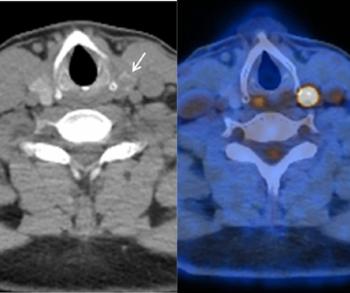
Traditional Imaging Modalities Used for Prostate Cancer
Experts review traditional imaging modalities for prostate cancer, highlighting the most commonly used modalities.
Episodes in this series

Umesh D. Oza, MD: Hello, and thank you for joining this Diagnostic Imaging Rad-View program titled “Guideline-Driven Insights: Exploring SNMMI PSMA PET Imaging Recommendations in Prostate Cancer.” I am Dr Umesh Oza. I’m a nuclear radiologist at Baylor University Medical Center in Dallas, Texas. Joining me today in this virtual discussion is my colleague.
Jaideep S. Sohi, MD: Hi, I’m Jaideep Sohi. I’m the president and managing partner of American Molecular Imaging. I’m also an assistant professor of nuclear medicine at the California Northstate School of Medicine in Elk Grove, California. Finally, I’m [on the] clinical faculty in radiology at Northwestern University.
Umesh D. Oza, MD: In our discussion today, we’ll explore recent SNMMI [Society of Nuclear Medicine and Molecular Imaging] PSMA PET imaging advancements in prostate cancer, focusing on clinical utility and guideline-driven recommendations. Dr Sohi, if it’s OK with you, let’s get started.
Jaideep S. Sohi, MD: Absolutely.
Umesh D. Oza, MD: What would you say have been the traditional imaging modalities for prostate cancer staging or restaging?
Jaideep S. Sohi, MD: Historically, we’ve used multiple modalities. When we talk about traditional imaging modalities, we think about bone scans for whole-body staging. We look at CT imaging for whole-body anatomic evaluation, and then for more local evaluation, we’re looking at MRI as well. So I would say a combination of CT bone scan, ultrasound, and MRI have been the traditional imaging modalities that have been utilized.
Umesh D. Oza, MD: I agree. That’s sort of what we’d been dealing with for decades until some new things changed in the landscape recently. So what ordering patterns have you experienced from your referring positions, such as at the diagnosis point, treatment planning, or posttreatment monitoring? And let’s just say in the last few years.
Jaideep S. Sohi, MD: Again, historically, when we are looking at whole-body staging at the initial diagnosis time point, we’re looking at CT, a combination of CT and bone scan with regard to follow-up post treatment. Again, it’s symptom-driven, right? So we’re looking at CT bone scan, maybe MRI. We’ve also utilized FDG [fluorodeoxyglucose F 18] PET sparingly, but we’d used that in the past for appropriate indications, especially in the setting of widely metastatic disease.
Umesh D. Oza, MD: I agree. I think that’s been sort of around, the FDG PET-CT. As our audience knows, and as you know, it’s the mainstay for staging and restaging, but, unfortunately, one of the most common cancers, we can’t use it for. And I get tired of using the same disclaimers, like, “The sensitivity may not be there. Consider other follow-up or continued follow-up recommended.” So I agree with you. And out of those, what do you think for me? Recently, I feel that more and more prostate MRIs are being ordered even before they biopsy lesions in my practice. Are you seeing, as far as just working up an elevated PSA [prostate-specific antigen] once they’ve passed normal, kind of benign causes, [that] you have a trend of a PSA? Have you seen more prostate MRIs being ordered for that, or do they jump into biopsies? What have you seen in your practice?
Jaideep S. Sohi, MD: To mirror what you said, we’re definitely seeing an upward trend in the utilization of MRI. And I think that’s been a wonderful addition to our arsenal in tackling this serious disease. So, definitely, [I agree with] your position [that] prostate MRI [use] has been increasing in the initial staging and initial diagnosis phase.
Transcript is AI-generated and edited for clarity and readability.
Newsletter
Stay at the forefront of radiology with the Diagnostic Imaging newsletter, delivering the latest news, clinical insights, and imaging advancements for today’s radiologists.






























